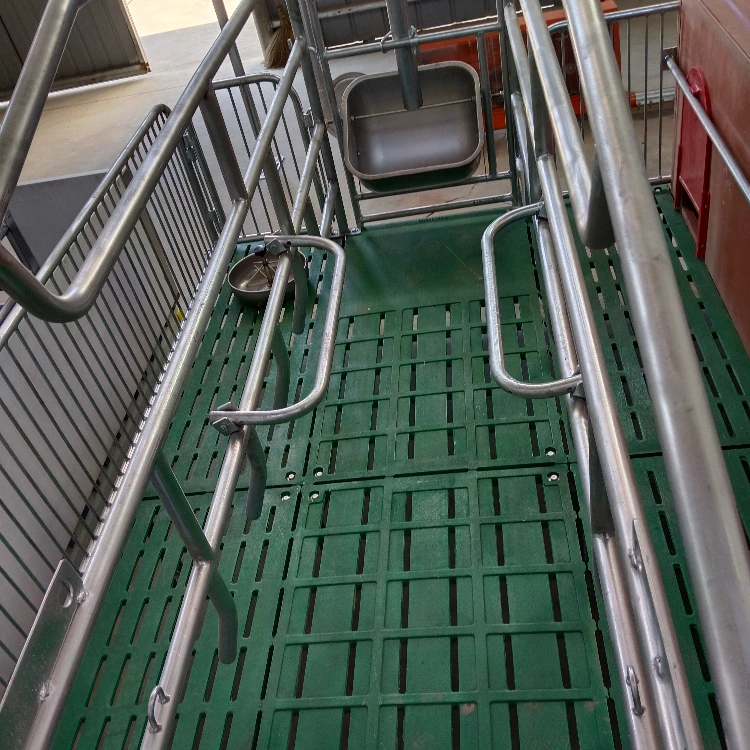Animal Feed Pellet Production Equipment for Efficient Livestock Nutrition and Farm Management
Sep . 25, 2024 13:54 Back to list
Animal Feed Pellet Production Equipment for Efficient Livestock Nutrition and Farm Management
Understanding Animal Pellet Feed Machines
In recent years, the demand for high-quality animal feed has surged, driven by the growing livestock industry and the increasing need for sustainable food production. Animal pellet feed machines have emerged as an essential tool in this sector, playing a pivotal role in the efficient processing and formulation of feed for various types of livestock. This article delves into the significance, operation, and benefits of animal pellet feed machines.
What is an Animal Pellet Feed Machine?
An animal pellet feed machine is a specialized equipment designed to compress animal feed ingredients into dense, pelletized forms. This process not only improves the nutritional value of the feed but also enhances its digestibility, making it a preferred choice for farmers and feed manufacturers alike. These machines can handle a wide variety of raw materials, including grains, legumes, hay, and supplements, which are often mixed to create a balanced diet for livestock.
How Does It Work?
The operation of an animal pellet feed machine generally involves several key stages
1. Ingredient Preparation Raw materials are first ground into a fine powder. This process is crucial as it ensures that the ingredients are properly mixed and allows for maximal pellet formation.
2. Mixing After grinding, various components are mixed together to achieve the desired nutritional profile. Additives like vitamins, minerals, and other supplements may be incorporated during this stage to enhance the feed's health benefits.
3. Pelletizing The mixed feed is then fed into the pellet mill, where it is subjected to high pressure and temperature. The die within the machine compresses the feed into pellets, extruding them in the desired size and shape. Water and steam may also be added during this process to help bind the ingredients.
4. Cooling Once the pellets are formed, they are cooling down to stabilize their structure and prevent spoilage. This step is vital for maintaining the quality and shelf-life of the feed.
animal pellet feed machine

5. Packaging Finally, the cooled pellets are packaged for storage or distribution, ready to be delivered to livestock farms.
Benefits of Using Pellet Feed Machines
1. Improved Nutritional Value Pelletizing feed enhances the bioavailability of nutrients, making it easier for animals to digest and absorb food. This leads to better growth rates and overall health for livestock.
2. Reduced Feed Waste Pellets are compact and tightly packed, minimizing spillage and wastage. This efficiency is particularly beneficial for large-scale livestock operations.
3. Enhanced Palatability The uniform size and shape of pellets can improve the appeal of the feed to animals, encouraging better feed intake and growth.
4. Customization Feed formulations can be easily adjusted based on the specific needs of different livestock types, making it possible to create specialized diets.
5. Sustainability By optimizing feed efficiency and reducing waste, animal pellet feed machines contribute to more sustainable farming practices, essential for meeting the food demands of a growing population.
Conclusion
Animal pellet feed machines represent a vital advancement in feed technology, offering numerous benefits that support both livestock health and farm productivity. As the industry continues to evolve, the adoption of such innovative equipment will play a crucial role in ensuring sustainable and efficient food production for the future. Farmers and feed manufacturers who invest in pelletizing technology are likely to see significant improvements in their operations, paving the way for a more sustainable agricultural landscape.
-
Automatic Feeding Line System-Pan Feeder Nipple Drinker|Anping County Yize Metal Products Co., Ltd.
NewsJul.29,2025
-
Hot Sale 24 & 18 Door Rabbit Cages - Premium Breeding Solutions
NewsJul.25,2025
-
Automatic Feeding Line System Pan Feeder Nipple Drinker - Anping County Yize Metal Products Co., Ltd.
NewsJul.21,2025
-
Automatic Feeding Line System Pan Feeder Nipple Drinker - Anping County Yize Metal Products Co., Ltd.
NewsJul.21,2025
-
Automatic Feeding Line System - Anping Yize | Precision & Nipple
NewsJul.21,2025
-
Automatic Feeding Line System - Anping Yize | Precision & Nipple
NewsJul.21,2025






